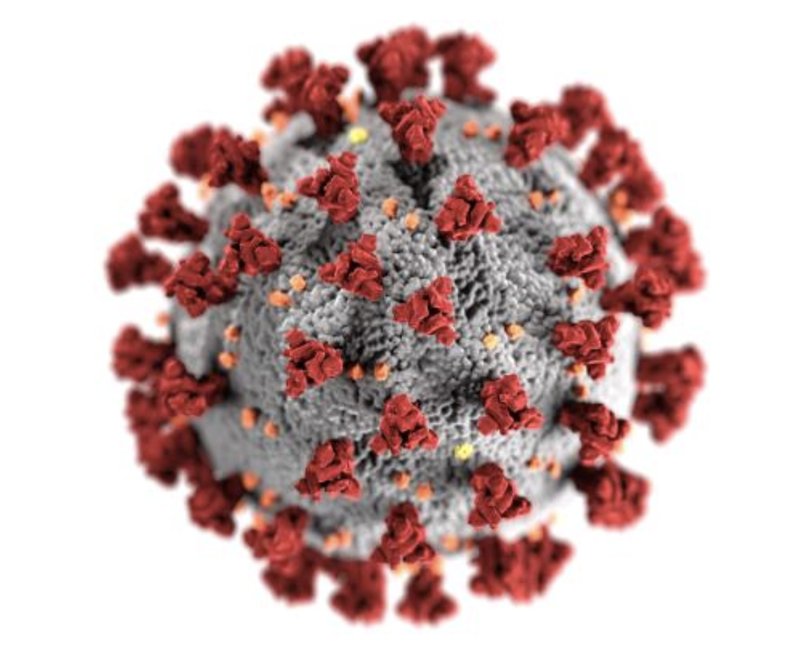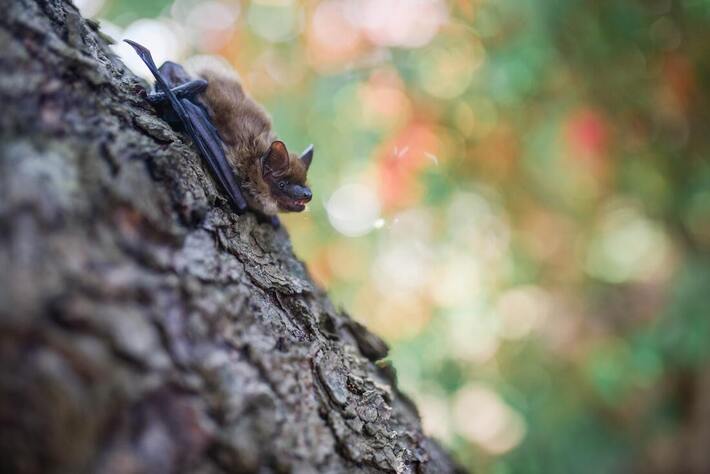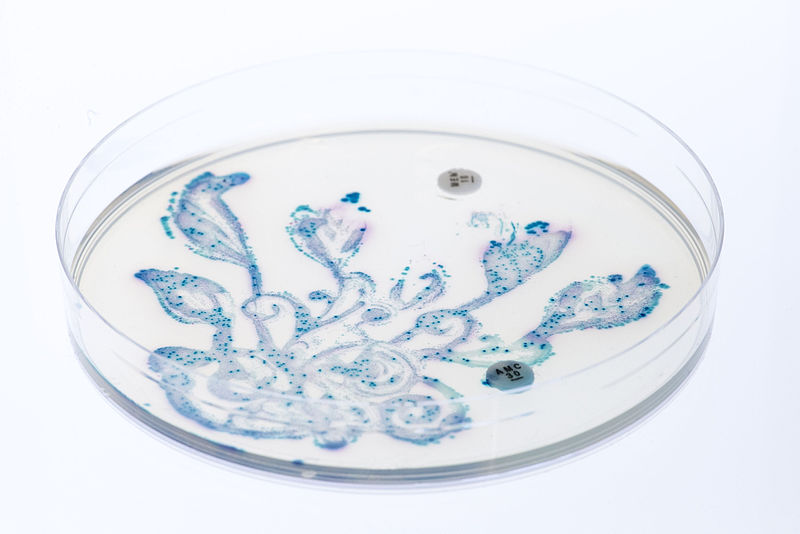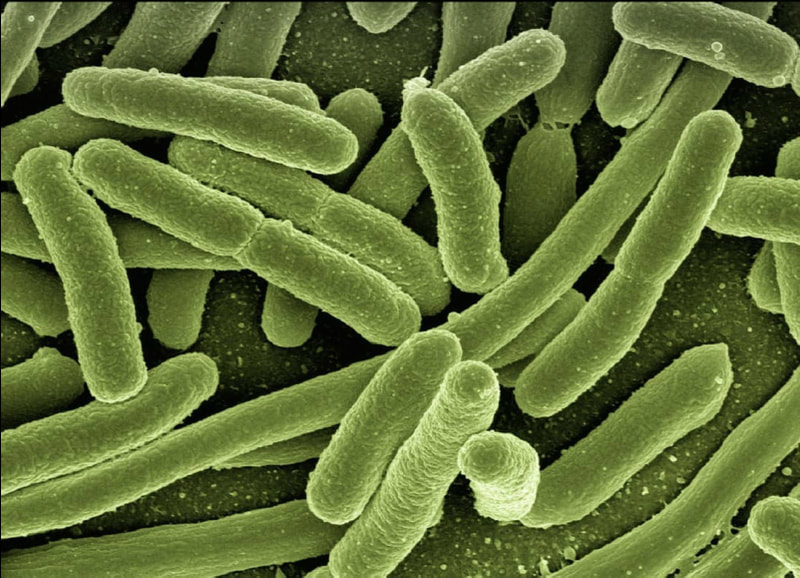The Origins of the Novel Coronavirus
Ananta Wadhwa and Laila Khorasani
Edited by Vivian Nguyen
April 27 2021
Edited by Vivian Nguyen
April 27 2021
General Overview
Ever since the emergence of a rapidly spreading “pneumonia” in Wuhan, China, a significant effort has been put into researching the origins,transmission, and other characteristics of the disease now known as COVID-19. While the virus behind COVID-19, SARS-CoV-2, is the seventh of the coronavirus family to infect humans, it is one of the only viruses in the family to cause severe symptoms and infect thousands in a short period of time. In March 2020, the World Health Organization (WHO) officially declared the rapid spread of COVID-19 a pandemic as the disease has reached worldwide proportions. Over two million people have died due to COVID-19 worldwide. Considering the devastating effects of this highly contagious respiratory illness, it is important to understand the biological origins of SARS-CoV-2, how it spreads, and its transmission mechanisms.
In order to attack and infiltrate healthy host cells, SARS-CoV-2 uses protrusions on its surface called spike proteins to infiltrate human ACE2 cells (like how a key fits into a lock). ACE2 is found on two distinct cell types within the human airway and lungs. This nuance explains why individuals infected with SARS-CoV-2 may experience severe respiratory symptoms, such as shortness of breath. These symptoms could lead to pneumonia and body-wide infection in critical cases leading to the need of respirators to assist in breathing. Since the virus specifically targets the lungs, it is easily transmittable through sneezing and coughing. Spike proteins have been characterized across many different members of the coronavirus family. However, there is one region of the spike proteins in SARS-CoV-2 that is unique, thereby allowing it to attack human respiratory cells (through binding to ACE2 receptors). This region is called the receptor-binding domain (RBD), and it has been actively studied since its discovery. Because this one region allows the virus to bind to ACE2 receptors, this means that the disease can theoretically infect any organism that has ACE2 receptors similar to those of humans.
Ever since the emergence of a rapidly spreading “pneumonia” in Wuhan, China, a significant effort has been put into researching the origins,transmission, and other characteristics of the disease now known as COVID-19. While the virus behind COVID-19, SARS-CoV-2, is the seventh of the coronavirus family to infect humans, it is one of the only viruses in the family to cause severe symptoms and infect thousands in a short period of time. In March 2020, the World Health Organization (WHO) officially declared the rapid spread of COVID-19 a pandemic as the disease has reached worldwide proportions. Over two million people have died due to COVID-19 worldwide. Considering the devastating effects of this highly contagious respiratory illness, it is important to understand the biological origins of SARS-CoV-2, how it spreads, and its transmission mechanisms.
In order to attack and infiltrate healthy host cells, SARS-CoV-2 uses protrusions on its surface called spike proteins to infiltrate human ACE2 cells (like how a key fits into a lock). ACE2 is found on two distinct cell types within the human airway and lungs. This nuance explains why individuals infected with SARS-CoV-2 may experience severe respiratory symptoms, such as shortness of breath. These symptoms could lead to pneumonia and body-wide infection in critical cases leading to the need of respirators to assist in breathing. Since the virus specifically targets the lungs, it is easily transmittable through sneezing and coughing. Spike proteins have been characterized across many different members of the coronavirus family. However, there is one region of the spike proteins in SARS-CoV-2 that is unique, thereby allowing it to attack human respiratory cells (through binding to ACE2 receptors). This region is called the receptor-binding domain (RBD), and it has been actively studied since its discovery. Because this one region allows the virus to bind to ACE2 receptors, this means that the disease can theoretically infect any organism that has ACE2 receptors similar to those of humans.
Image Source: Paige Cody
ORIGINS & NEW VARIANTS
While the exact origins of the virus remain unknown, preliminary evidence indicates that it likely originated in an animal host and mutated to infect humans either before, during, or after a zoonotic transfer (when it transferred from animal to human). Given a strong history of similar SARS-CoV diseases originating in bats, many researchers suspect that SARS-CoV-2 also originated in bats. Genomic analysis of a suspected Rhinolophus affinis bat coronavirus (abbreviated as RaTG13) shows that 96% of their genome is identical to that of SARS-CoV-2. However, stark differences between these viruses exist at a critical point in the genome: the spike-proteins. While this isn’t entirely disqualifying, it indicates that it’s unlikely that the RaTG13 is a direct relative of SARS-CoV-2. Recent reports have also implicated pangolins as a potential host carrier for a genetically similar coronavirus. Pangolin coronaviruses are less similar to SARS-CoV-2 overall compared to RaTG13, but they do share the critical RBD region of the spike proteins. Even so, there is still uncertainty surrounding the exact molecular origins for this novel coronavirus, and far more work needs to be done in order to better identify its natural history. While the specific scientific origins of the virus may not seem of utmost importance in this global crisis, they may provide insights into SARS-CoV-2 transmission, origin possibilities for future pandemics, and strategies to decrease transmission.
Recently, new variants of the SARS-CoV-2 virus have been discovered around the world. New variants of the virus occur when a mutation or a series of mutations occur in the ribonucleic acid (RNA) of the virus. RNA is the genetic material or instructions for creating the SARS-CoV-2 virus that enables the specific structure, function, and abilities of the virus. In other words, it is the unique recipe for creating the SARS-CoV-2 virus. Sometimes, errors occur in copying the recipe to create a new virus. These errors are known as mutations, and they can alter the primary characteristics of the SARS-CoV-2 virus in unexpected ways that can make the virus more resistant to treatment or more deadly.
Originating in London and Southeast England, a new, mutated variant called “SARS-CoV-2 VOC 202012/01” has emerged as an extremely common and spreadable version of the virus. This strain has about 23 changes in the RNA sequence or the recipe for the virus. Since December 2020, this novel strain of the virus has seemingly been able to infect a greater number of people more rapidly in the communities it appears in compared to other major strains of COVID-19. The virus’ ability to mutate has major implications and will inform the strategies of scientists and public health officials when it comes to effectively vaccinating the people, creating new treatments, and trying to slow its spread. Other strains in South Africa and Brazil have also become widespread, increasing the urgency and importance of staying up-to-date on CDC and WHO recommendations on how to best stem the spread of these variants. Since then, there have been multiple new strains that have become prevalent in California. These strains have come from all over the world, and there are all at least 10 or more cases. The most common strain, as of April 7, 2021, is B.1.429 which is marked by 20% increased transmission and less efficacy of treatment. As these strains are consistently emerging, and this area of research is a rapidly growing area of research, we urge all to seek reputable, peer reviewed sources for accurate updates on any new developments and new strains of SARS-CoV-2.
While the exact origins of the virus remain unknown, preliminary evidence indicates that it likely originated in an animal host and mutated to infect humans either before, during, or after a zoonotic transfer (when it transferred from animal to human). Given a strong history of similar SARS-CoV diseases originating in bats, many researchers suspect that SARS-CoV-2 also originated in bats. Genomic analysis of a suspected Rhinolophus affinis bat coronavirus (abbreviated as RaTG13) shows that 96% of their genome is identical to that of SARS-CoV-2. However, stark differences between these viruses exist at a critical point in the genome: the spike-proteins. While this isn’t entirely disqualifying, it indicates that it’s unlikely that the RaTG13 is a direct relative of SARS-CoV-2. Recent reports have also implicated pangolins as a potential host carrier for a genetically similar coronavirus. Pangolin coronaviruses are less similar to SARS-CoV-2 overall compared to RaTG13, but they do share the critical RBD region of the spike proteins. Even so, there is still uncertainty surrounding the exact molecular origins for this novel coronavirus, and far more work needs to be done in order to better identify its natural history. While the specific scientific origins of the virus may not seem of utmost importance in this global crisis, they may provide insights into SARS-CoV-2 transmission, origin possibilities for future pandemics, and strategies to decrease transmission.
Recently, new variants of the SARS-CoV-2 virus have been discovered around the world. New variants of the virus occur when a mutation or a series of mutations occur in the ribonucleic acid (RNA) of the virus. RNA is the genetic material or instructions for creating the SARS-CoV-2 virus that enables the specific structure, function, and abilities of the virus. In other words, it is the unique recipe for creating the SARS-CoV-2 virus. Sometimes, errors occur in copying the recipe to create a new virus. These errors are known as mutations, and they can alter the primary characteristics of the SARS-CoV-2 virus in unexpected ways that can make the virus more resistant to treatment or more deadly.
Originating in London and Southeast England, a new, mutated variant called “SARS-CoV-2 VOC 202012/01” has emerged as an extremely common and spreadable version of the virus. This strain has about 23 changes in the RNA sequence or the recipe for the virus. Since December 2020, this novel strain of the virus has seemingly been able to infect a greater number of people more rapidly in the communities it appears in compared to other major strains of COVID-19. The virus’ ability to mutate has major implications and will inform the strategies of scientists and public health officials when it comes to effectively vaccinating the people, creating new treatments, and trying to slow its spread. Other strains in South Africa and Brazil have also become widespread, increasing the urgency and importance of staying up-to-date on CDC and WHO recommendations on how to best stem the spread of these variants. Since then, there have been multiple new strains that have become prevalent in California. These strains have come from all over the world, and there are all at least 10 or more cases. The most common strain, as of April 7, 2021, is B.1.429 which is marked by 20% increased transmission and less efficacy of treatment. As these strains are consistently emerging, and this area of research is a rapidly growing area of research, we urge all to seek reputable, peer reviewed sources for accurate updates on any new developments and new strains of SARS-CoV-2.
Featured Image Source: Pixabay
RELATED ARTICLES
|
Vertical Divider
|
Vertical Divider
|
Vertical Divider
|






